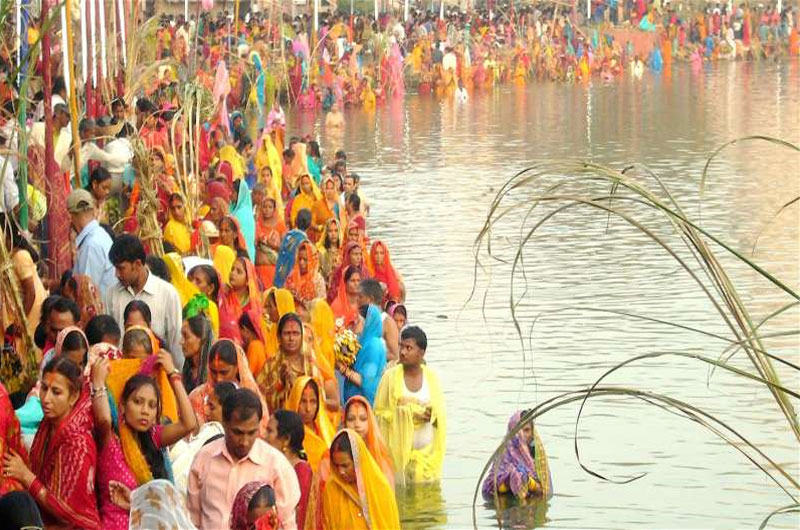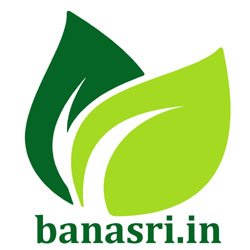
Festivals of Bihar
Bihar, located in the eastern part of India, celebrates a variety of festivals that reflect its cultural diversity and traditional heritage. These festivals are marked by vibrant rituals, religious fervor, and community gatherings, offering a glimpse into the rich cultural tapestry of the state.
Chhath Puja
Time of Festival
- October or November
Specialty of the Festival
- Significance: Worship of the Sun God for well-being, prosperity, and longevity.
- Activities: Offering prayers, fasting, and performing rituals at riverbanks or water bodies.
Locality of the Festival
- Celebrated Across: Bihar, with major celebrations in Patna, Bhagalpur, and other riverside towns.
Nature of the Festival
- Type: Religious and cultural
- Description: Chhath Puja is a significant festival in Bihar, dedicated to the Sun God (Surya Devta). Devotees, predominantly women, observe strict rituals including fasting and taking dips in rivers or ponds during sunrise and sunset. They offer prasad (offerings) consisting of fruits, sweets, and other traditional dishes to the Sun God, seeking blessings for the well-being and prosperity of their families. The festival culminates with devotees breaking their fast after sunset.
Sonepur Mela (Harihar Kshetra Mela)
Time of Festival
- November
Specialty of the Festival
- Significance: Asia’s largest cattle fair and religious gathering.
- Activities: Buying and selling of cattle, elephants, horses, and cultural performances.
Locality of the Festival
- Celebrated in: Sonepur, near Patna.
Nature of the Festival
- Type: Cultural and commercial
- Description: Sonepur Mela is a historic fair that combines religious rituals with commercial activities. It is renowned for its vast livestock market where traders buy and sell various animals, including elephants, horses, and cattle. Apart from the trading, the fair hosts cultural programs, folk dances, and traditional music performances. Pilgrims also visit the Harihar Nath Temple to offer prayers and seek blessings during this auspicious time.
Teej
Time of Festival
- July or August
Specialty of the Festival
- Significance: Women’s festival celebrating marital bliss and harmony.
- Activities: Women dressed in colorful attire, swing on decorated swings (jhulas), and perform traditional rituals.
Locality of the Festival
- Celebrated Across: Bihar, especially in rural areas and among married women.
Nature of the Festival
- Type: Cultural and social
- Description: Teej is a festival celebrated primarily by women to pray for the well-being and longevity of their husbands. Women dress up in bright traditional attire, apply henna (mehndi) on their hands, and adorn themselves with jewelry. They gather to sing traditional songs, swing on beautifully decorated swings (jhulas), and perform rituals dedicated to Goddess Parvati. The festival fosters a sense of unity among women, celebrating marital bliss and family harmony.
Makar Sankranti
Time of Festival
- January
Specialty of the Festival
- Significance: Harvest festival marking the transition of the Sun into Capricorn.
- Activities: Flying kites, bonfires, and traditional sweets like tilgul.
Locality of the Festival
- Celebrated Across: Bihar, with enthusiasm in rural areas and villages.
Nature of the Festival
- Type: Agricultural and cultural
- Description: Makar Sankranti is celebrated with great fervor in Bihar as a harvest festival. It marks the end of winter and the beginning of longer days. People take ritualistic baths in holy rivers like the Ganges and offer prayers to the Sun God. The festival is also famous for kite flying competitions where colorful kites fill the sky. Bonfires are lit, and traditional sweets made from sesame seeds and jaggery, like tilgul, are exchanged among family and friends, symbolizing unity and harmony.
Bihar Diwas
Time of Festival
- March 22nd
Specialty of the Festival
- Significance: Commemorates the formation of the state of Bihar.
- Activities: Cultural programs, exhibitions, and discussions on Bihar’s history and development.
Locality of the Festival
- Celebrated in: Patna and across Bihar.
Nature of the Festival
- Type: Cultural and historical
- Description: Bihar Diwas is celebrated on March 22nd every year to mark the formation of the state of Bihar. The day is dedicated to showcasing Bihar’s rich cultural heritage, history, and achievements. Cultural programs, exhibitions featuring Bihar’s arts, crafts, and cuisine, and discussions on the state’s development are organized. The festival aims to promote a sense of pride among Biharis and foster cultural exchange and understanding.
These festivals of Bihar highlight the state’s deep-rooted cultural traditions, religious fervor, and community spirit, making them significant celebrations that attract locals and tourists alike.
